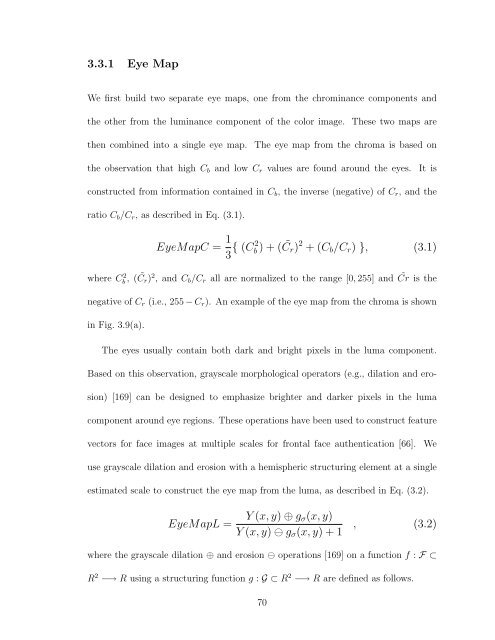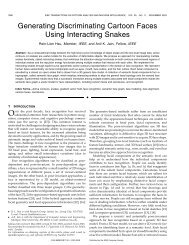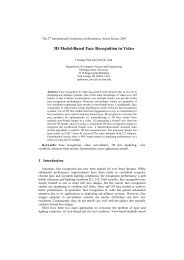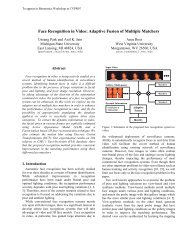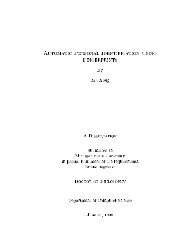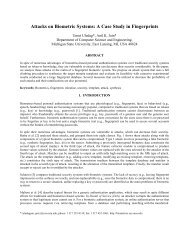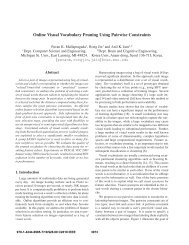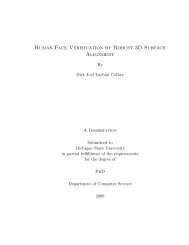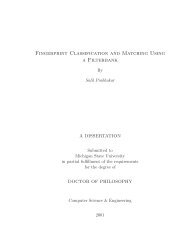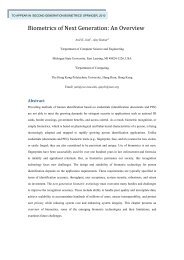Face Detection and Modeling for Recognition - Biometrics Research ...
Face Detection and Modeling for Recognition - Biometrics Research ...
Face Detection and Modeling for Recognition - Biometrics Research ...
You also want an ePaper? Increase the reach of your titles
YUMPU automatically turns print PDFs into web optimized ePapers that Google loves.
3.3.1 Eye Map<br />
We first build two separate eye maps, one from the chrominance components <strong>and</strong><br />
the other from the luminance component of the color image. These two maps are<br />
then combined into a single eye map. The eye map from the chroma is based on<br />
the observation that high C b <strong>and</strong> low C r values are found around the eyes. It is<br />
constructed from in<strong>for</strong>mation contained in C b , the inverse (negative) of C r , <strong>and</strong> the<br />
ratio C b /C r , as described in Eq. (3.1).<br />
EyeMapC = 1 3 { (C2 b ) + ( ˜C r ) 2 + (C b /C r ) }, (3.1)<br />
where C 2 b , ( ˜C r ) 2 , <strong>and</strong> C b /C r all are normalized to the range [0, 255] <strong>and</strong><br />
˜ Cr is the<br />
negative of C r (i.e., 255 − C r ). An example of the eye map from the chroma is shown<br />
in Fig. 3.9(a).<br />
The eyes usually contain both dark <strong>and</strong> bright pixels in the luma component.<br />
Based on this observation, grayscale morphological operators (e.g., dilation <strong>and</strong> erosion)<br />
[169] can be designed to emphasize brighter <strong>and</strong> darker pixels in the luma<br />
component around eye regions. These operations have been used to construct feature<br />
vectors <strong>for</strong> face images at multiple scales <strong>for</strong> frontal face authentication [66].<br />
We<br />
use grayscale dilation <strong>and</strong> erosion with a hemispheric structuring element at a single<br />
estimated scale to construct the eye map from the luma, as described in Eq. (3.2).<br />
EyeMapL = Y (x, y) ⊕ g σ(x, y)<br />
Y (x, y) ⊖ g σ (x, y) + 1 , (3.2)<br />
where the grayscale dilation ⊕ <strong>and</strong> erosion ⊖ operations [169] on a function f : F ⊂<br />
R 2 −→ R using a structuring function g : G ⊂ R 2 −→ R are defined as follows.<br />
70


